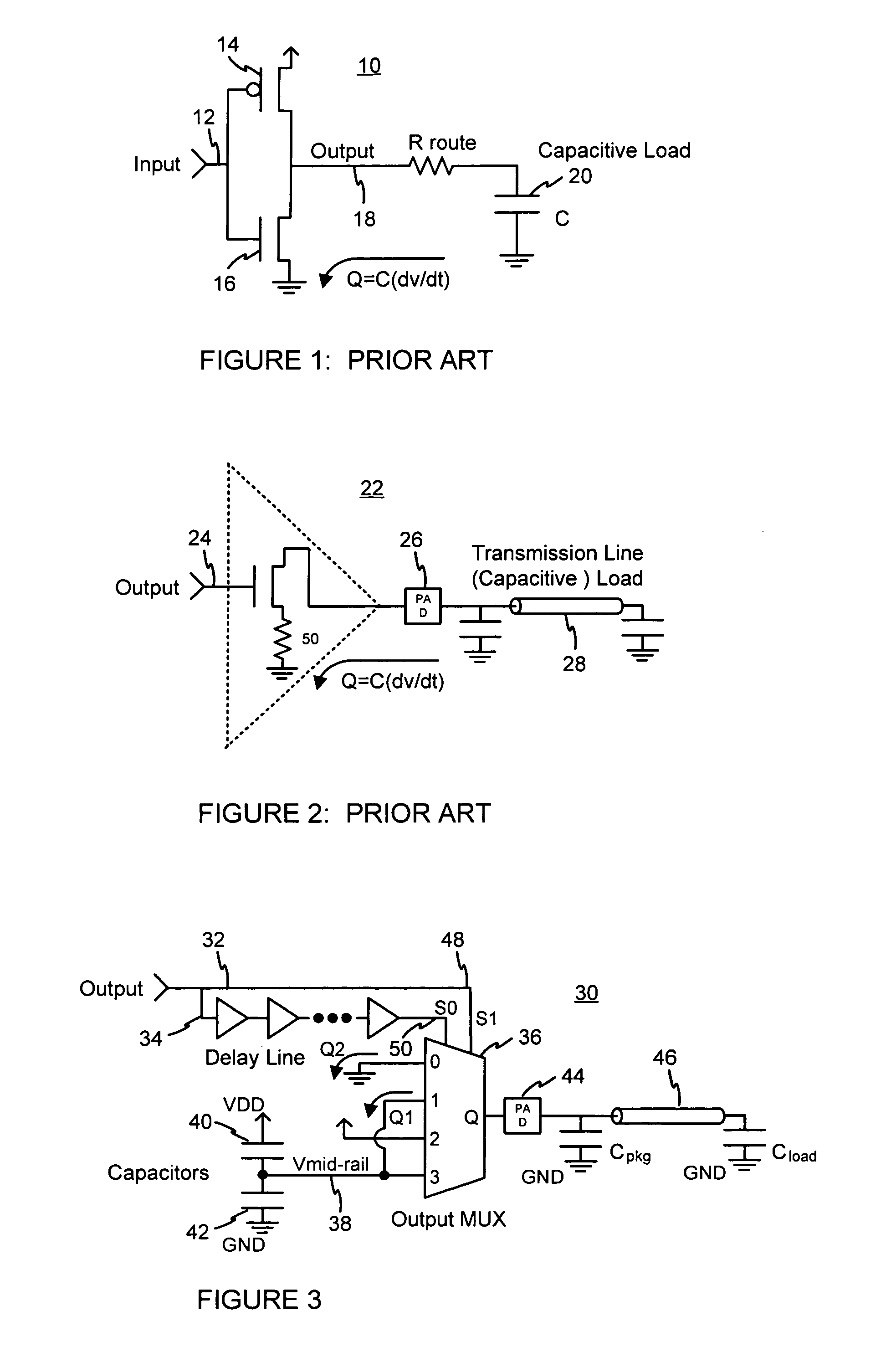Low power CMOS switching
a low-power cmos switching and switching technology, applied in the field of low-power cmos switching, can solve the problems of large amounts of alternating current (ac) switching power that they require, disadvantages, and large amounts of ac switching power, and achieve the effect of reducing power
- Summary
- Abstract
- Description
- Claims
- Application Information
AI Technical Summary
Benefits of technology
Problems solved by technology
Method used
Image
Examples
Embodiment Construction
[0009]Embodiments of the present invention can significantly reduce the amount of power dissipated by CMOS circuit switching. A switching circuit and method, consistent with the present invention, use less power and can be used to slow down edge rates for lower electromagnetic interference (EMI), less power supply noise, and better signal integrity of output drivers. Embodiments of the present invention can also reduce the switching noise induced on power supplies.
[0010]A CMOS switching circuit is used to transmit data. CMOS circuits can be used for many different applications such as, for example, to perform the following functions: invert signals; repeat signals; and perform logical operations such as AND, OR, NAND, NOR, XOR, or XNOR operations. A CMOS switching circuit can also be used as, for example, an I / O buffer. The purpose of an I / O CMOS circuit (buffer) is to communicate signals from a chip embodying the circuit to the hardware outside of the chip, and from the hardware to...
PUM
 Login to View More
Login to View More Abstract
Description
Claims
Application Information
 Login to View More
Login to View More - R&D
- Intellectual Property
- Life Sciences
- Materials
- Tech Scout
- Unparalleled Data Quality
- Higher Quality Content
- 60% Fewer Hallucinations
Browse by: Latest US Patents, China's latest patents, Technical Efficacy Thesaurus, Application Domain, Technology Topic, Popular Technical Reports.
© 2025 PatSnap. All rights reserved.Legal|Privacy policy|Modern Slavery Act Transparency Statement|Sitemap|About US| Contact US: help@patsnap.com


